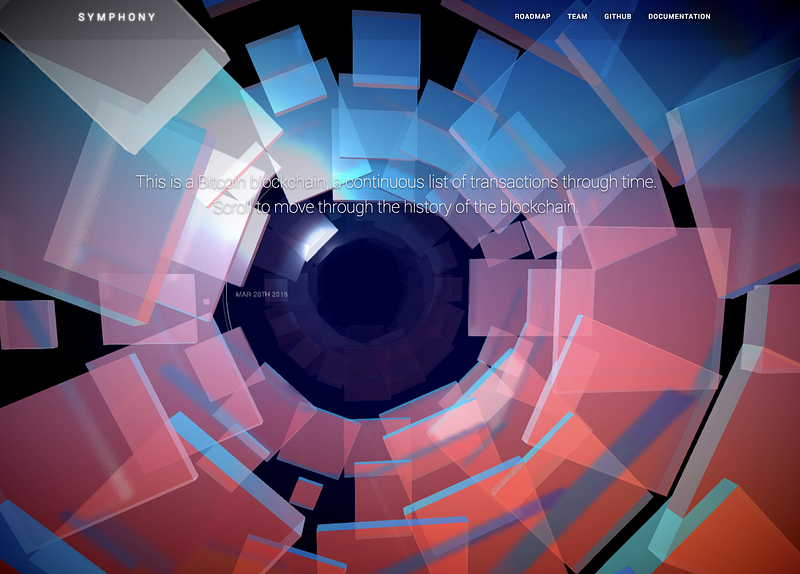
Immerse issue #15: Should storytellers care about blockchain?
Over the past several months here at Immerse, we’ve been poring through articles and broadcasts about blockchain technnology, trying to get a handle on how our readers might use it in their work.
Truthfully, we’re still not sure. But here are a few angles that caught our eye:
What the heck is a blockchain anyhow?
Here’s John Oliver’s gloss on Bitcoin, cryptocurrencies, and blockchain:
Per the Financial Times, it’s “an electronic database of transactions, whereby new deals are added to the chain and then stamped and protected with a mathematical equation. The database is shared among hundreds of other computers, or ‘nodes’ on the network, to make it virtually impossible for one agent to change it. These nodes use their computing power and compete to verify and decode the latest transaction. This is then appended as a ‘block’ to the chain. Its ability to offer a verifiable, immutable, and public record is what attracts many advocates.”
Maybe it’s useful for funding media?
NiemanLab has been reporting on a few different experiments with blockchain and journalism. Chicago-based local news site DNAInfo recently rebranded itself Block Club Chicago, and is soliciting cryptocurrency from subscribers. The transaction is based on a cryptocurrency called Civil, which is designed specifically to support journalism startups, in what reporter Ricardo Bilton calls “one of the most confusing efforts to fund journalism in recent memory.”
Readers invest in “CVL” tokens, which they give to publications to support journalists. This in turn gives newsrooms a speculative stake in the currency, which will “hopefully—increase in value as more people buy over time. This, Civil hopes, will encourage more people to invest in the marketplaces, creating a self-sustaining system that will help fund more reporting.” What’s more, it provides a secured mode for publishing content that is stored in the blockchain. Civil is launching any day now. Learn more here.
“Blockchain may not turn out to be a panacea, but in these dark times for journalism, it offers a glimmer of hope,” writes Nicky Woolf, formerly of The Guardian and The New Statesmen. On Poynter.org, David Beard interviews Jarrod Dicker, who left The Washington Post recently to become the CEO of blockchain startup Po.et., “an open source ledger that promises to be able to track digital content and advertising, matching content with paying audiences.”
Indiegogo, a crowdfunding site used by independent media producers and artists, is also looking into “initial coin offerings” as a way to fund startups. “Initial coin offerings have been so hot — and some say so unhinged — that some companies have found success with them even after failed crowdfunding campaigns. An online art gallery known as Maecenas, which failed to raise 400,000 pounds (currently about $533,000) through crowdfunding this year, raised $15 million a few months later through an I.C.O.,” writes New York Times reporter Nathaniel Popper.
CEEK VR is using blockchain to build audiences for VR concerts for people who can’t make it to events in person. “Each CEEK Token holder will be able to access virtual reality spaces for real world events such as sports matches, fundraisers, and concerts. The platform has a growing partner ecosystem that includes Universal Music, T-Mobile, and Apple, using the Platform to scale existing 2D content into virtual reality, as well as creating and distributing original experiences,” reports Alice Bonasio for VR Scout.
For photographers, KodakCoin proposes to provide greater control over managing image rights, and to “seamlessly register, manage, and monetize creative assets for the photographic community.”
Could it help us develop more trustworthy content?
One challenger to Wikipedia proposes to use blockchain technology to both reward contributors and authenticate their contributions. This functionality would be built on top of an existing crowdsourced encyclopedia called Everipedia, which is aiming to attract a more diverse group of editors than Wikimedia currently boasts. Wired reporter Peter Rubin examines how the system would function here.
Perhaps it’s an emerging form of media itself?

As a new stream of user-generated data, blockchain technology has the potential to reveal fresh types of stories about decentralized human transactions and to power art through data. For example, check out this baffling but mesmerizing Symphony of Blockchains.
Dunno, but these “blockchain bros” are scary fascinating
At the very least, for reporters and documentarians, the blockchain boom is proving to be a font of stories that reveal human cupidity and hubris at its finest.
“Watching the world of initial coin offerings over the past few years has been like watching popcorn pop. Everything rattled around in the hot air for what seemed like forever and then pop! Mastercoin! Ethereum! Bancor! Tezos! Then other kernels started popping, and now we’re eating popcorn for breakfast, lunch, and dinner,” writes Paul Ford for Bloomberg Businessweek.
“Bubbles are melancholy things — swirls of lies and optimism used to hide a million unrealized yearnings,” he continues. “Bitcoin will crash because of course it will. Bubbles burst. The real estate and athletics management people go home, and the believers remain, meeting up, planning new markets. It could take years, it could take a decade, but the blockchain freaks have a world in their heads, and they won’t rest until it’s real. That the rest of us live here, too, is the least of their concerns. Some of the things they’ll do will be magical, community-building, economically thrilling. Others may keep us up at night.”
Speaking of nightmares, don’t miss this hair-raising piece about how newly rich blockchain entrepreneurs are building a crypto utopia in Puerto Rico. Get a storyteller in there stat!
Immerse is an initiative of Tribeca Film Institute, MIT Open DocLab and The Fledgling Fund. Learn more about our vision for the project here.